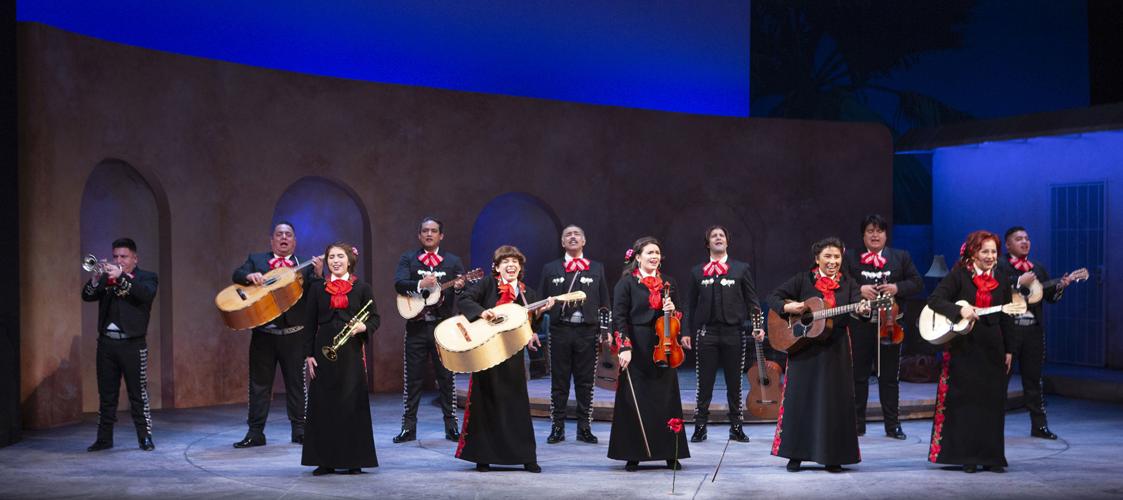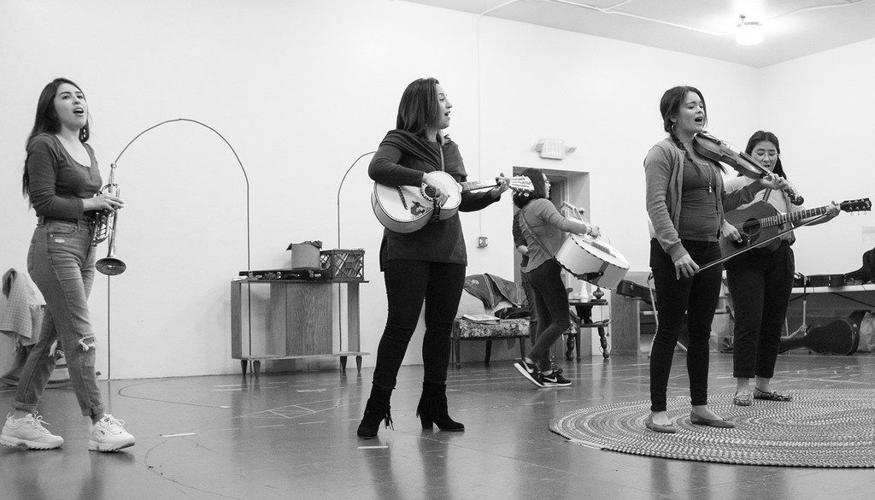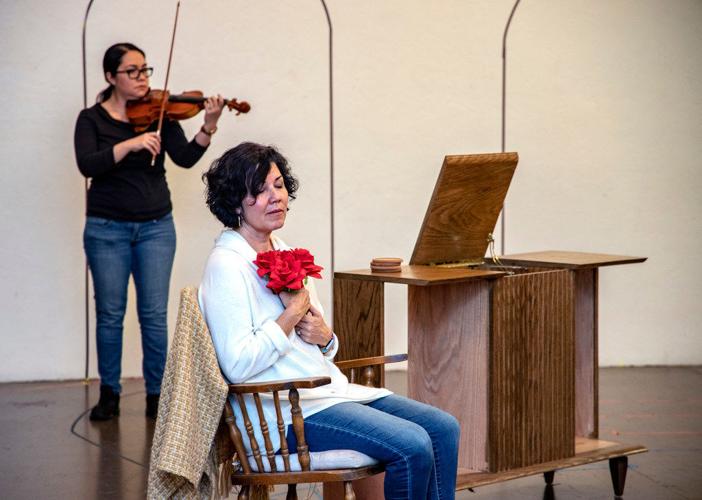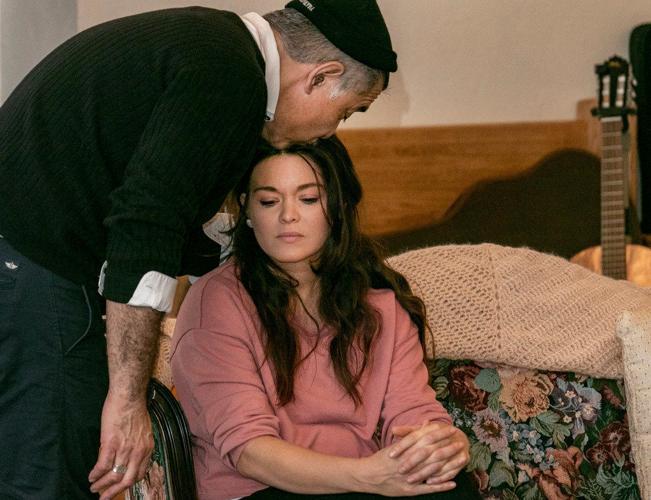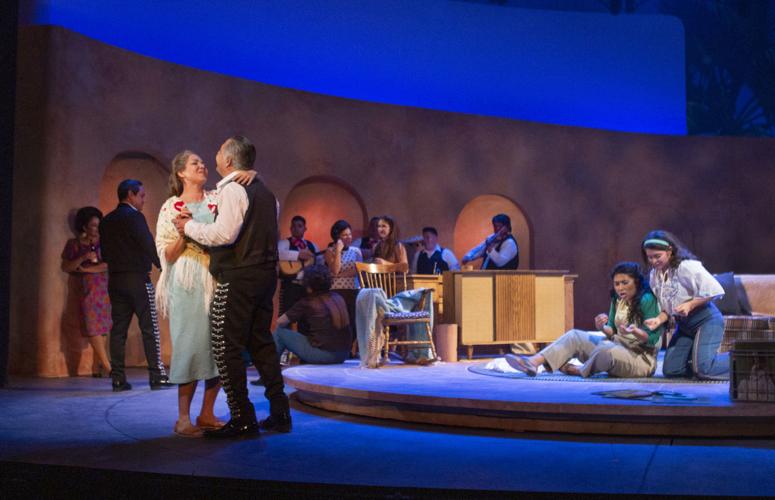The message arrived in all caps. It was clear as the desert sky after a summer rain.
“ARIZONA THEATRE COMPANY’S PRODUCTION OF ‘AMERICAN MARIACHI’ IN TUCSON WAS BEST-SELLING PLAY IN COMPANY’S HISTORY,” read the news release last week.
It went on to say that nearly 5,900 single tickets were sold during the play’s three-week run in March at the Temple of Music and Art where ATC stages its plays in Tucson.
No surprise here and for many Tucsonenses, who are steeped in the culture of the music and its lure. It is the power of mariachi that generated the welcomed success for ATC.
“I knew it would do well,” said Billy Russo, ATC’s managing director. “But I didn’t think it would do that well.”
“Give ’em mariachi and they will come” is not an old Mexican dicho but it might as well be a popular saying.
The play, which featured Tucson mariachis Esteban Dagnino, Francisco Javier Molina, Ali Pizarro and Antonio A. Pró and Stephanie Swift Molina, exceeded everyone’s expectations.
It did well, too, in its Phoenix run for ATC, surpassing sales predictions in April at the Herberger Theater Center where the three-week production exceeded the single-ticket sales goal by 24 percent.
“It was the most important play of the season,” said Russo. I caught up with him by phone while he was attending a regional theater conference in Milwaukee on Friday. He said the play’s success is a popular topic among his conference attendees.
Russo said the appeal of the play was its universal themes of family, family values and dealing with traditions, whether they “bend or break.” The play also spoke to its audiences, a large number who were first-time theater goers and likely Mexican-American.
The play centers around Lucha, who is her ailing mother’s primary caregiver. When Lucha discovers an old Mexican record and plays it, her mother’s dementia temporarily dissolves and invigorates Lucha’s mom. That prompts Lucha to come up with a idea of forming an all-female mariachi. But women mariachis run contrary to her Mexican-American culture and the wishes of her mariachi father.
“I do give all the credit to the playwright (José Cruz González),” Russo said.
The success of the play also demonstrated that Latino-themed plays can attract large audiences.
Russo said that 45% in the Tucson audience were first-time theater goers and in Phoenix that percentage mushroomed to 67%. He said a more detailed demographic survey has not been done but he believes that many in the Tucson and Phoenix audiences were Latinos.
“American Mariachi” was not ATC’s first Latino-themed play. It has over the years staged plays written by Latinos or with Latino actors. But this play not only was written by a Mexican-American playwright, but most of the actors were Latino and the story was authentic Mexican-American.
When Latino audiences see themselves represented on the theater stage (or movie screen for that matter), when they see their stories told respectfully and honestly, they will go to the theater. And Latinos are no strangers to theater. Mexico and other Latin-American countries have a long, storied history of theater.
Tucson has long had theater companies devoted to presenting Mexican-American narratives on the stage. In the early part of the last century, Carmen Soto de Vásquez established Teatro Carmen on South Meyer Avenue in Barrio Viejo. The Spanish-language theater was considered the most sophisticated theater at the time.
In the early 1960s, Felizardo Valencia, a Spanish-language and Latin teacher in Tucson Unified School District, and Barclay Goldsmith and Raquel Rubio-Goldsmith, my father, Ernesto V. Portillo, and others created El Teatro del Pueblo, a theater group that presented local, national and international plays for several years at Safford Junior High School.
Subsequently there was Teatro Libertad, a Tucson “street” theater group in the 1970s that morphed into Borderlands Theater, which today continues to produce Latino-themed plays.
“We want to see ourselves. We want to see our stories, of our communities,” said Eva Tessler, who since 1994 has acted, directed and danced in theater groups in Tucson and around the country.
Currently, Tessler is involved with Teatro Dignidad, a new group that is staging “The Sound of Cracking Bones,” in English and Spanish, at the Temple of Music and Art Cabaret Theatre, May 9-19.
She was not surprised that “American Mariachi” did well. After all, she said, mariachi music is popular among non-Latino audiences.
Reflecting Tucson’s communities of color on the ATC stage is a value and goal of the professional theater group, Russo said.
“We have to reflect the communities that live around us,” he said.
Not only to be inclusive but to ensure future growth in Tucson and Phoenix where the Latino populations continue to grow.
“American Mariachi” should not be a one-time hit. It can be a blueprint for future successes.


